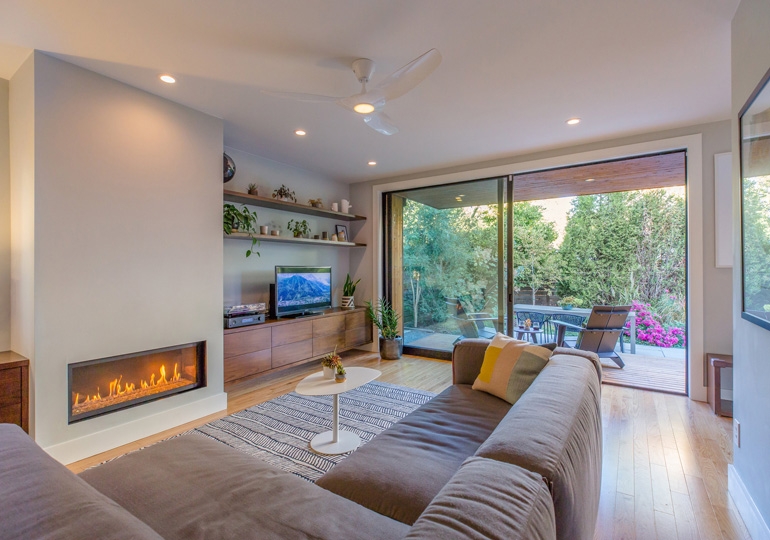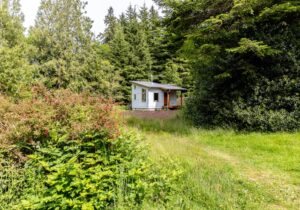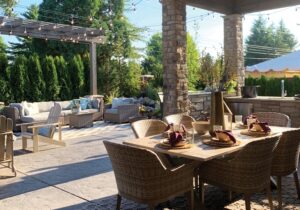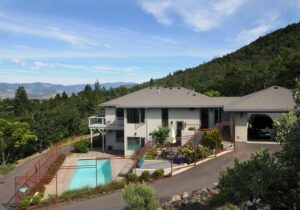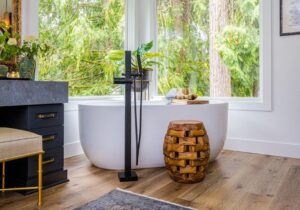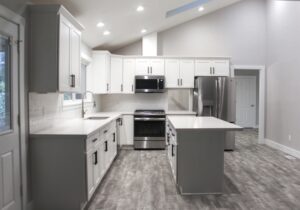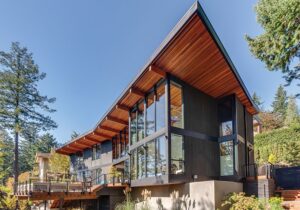Outside Architecture creates meaningful connections through design.
Photography by Sara Atkinson
The homeowners working with Portland firm Outside Architecture on this house-expansion project have always loved the diverse and urban vibe of their Northeast neighborhood near the hustle and bustle of restaurants and retail on North Williams Street. The nondescript, inwardly focused design of their builder infill house? Not so much.
“One of our design fortes is small projects with big impact,” says Jeremy Spurgin, the mastermind behind Outside Architecture. “We wanted to create a minimalist and contemporary addition to this home to make a functional bridge between the garage and the kitchen.”
Minimalist designs fueled by purpose and shaped by courageous choices are what Outside Architecture does best.
“We feel a deep responsibility for all facets of a project — from quality construction to positive relationships and bringing exciting design ideas to life on a budget,” Spurgin says.

Outside Thinking
Connecting people to the environment is a hallmark of Outside’s work. Human beings naturally gravitate to nature, especially in Oregon, where four-season outdoor living isn’t just possible but desirable. But this stock home, built in the 1990s, had no relationship to the outdoors. A garage, added post-construction, didn’t lead into the house, and its growing family was about to feel squeezed by the lack of a functional living room or ground-floor bathroom.
Outside Architecture decided to blur the distinction between indoor and outdoor, connecting the two and highlighting interstitial space. The patio is tucked into the envelope of the house, allowing the homeowners to enjoy the garden space even on a rainy Oregon day. The oversized door system from the living room to patio creates the most significant connection to the outdoors — in this case, a 12-foot-by-8-foot fully operational sliding door, the largest available. It frames a mural of the garden in lieu of artwork.
“It is definitely a counterpoint to the existing house,” Spurgin says. “The design is derived from its connection to the outdoors, rather than the original home’s architecture.”
The team collaborated with landscape architects Ecotone Environmental to unite the home with the garden courtyard space.

Environmental Pulse
Making design choices that are in harmony with the natural environment is what Outside Architecture calls its mission to “satisfy people and planet.” From the beginning, environmental responsibility has been a pillar of the company’s work. These guiding principles meant sourcing responsible materials for this project and complete life-cycle cost analysis of energy consumption and maintenance, including the integration of onsite stormwater management.
“We’re trying to shift the narrative on custom residential work from being primarily aesthetic and emotional to also consider environmental and energy efficiency goals,” Spurgin says.
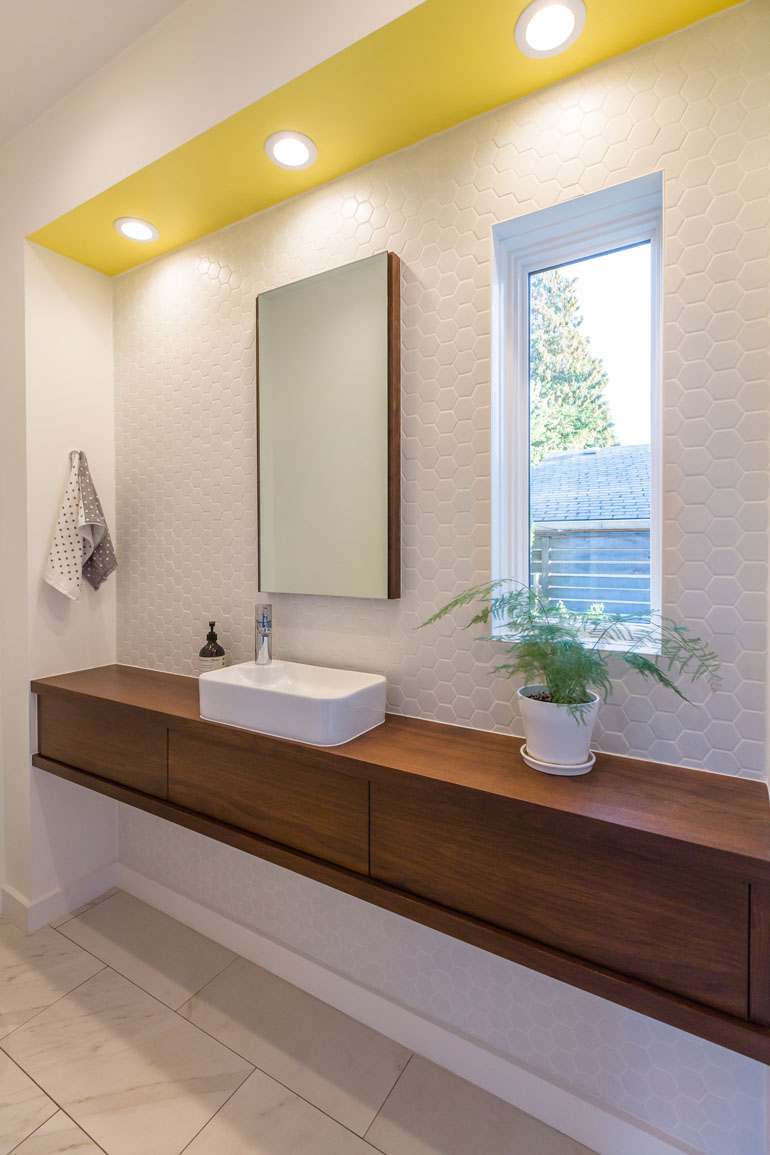
Forging Connections
From a design perspective, the addition stands apart from the original home style, a kind of nondescript, newer Craftsman style. Spurgin’s approach favors concise composition over ornamentation. It meets the essential lifestyle and aesthetic values of the family with more connection to local and natural materials and textures.
The client opted for a more modern pavilion design with natural materials over matching the original look of the house.
“The addition provided some lacking personality to the existing house,” says Spurgin. “The homeowners affectionately refer to the addition as ‘the mullet.’” — business in the front, party in the back.
The easy livability of the addition and its integration with the outdoors makes it the family’s destination for relaxing and entertaining.



